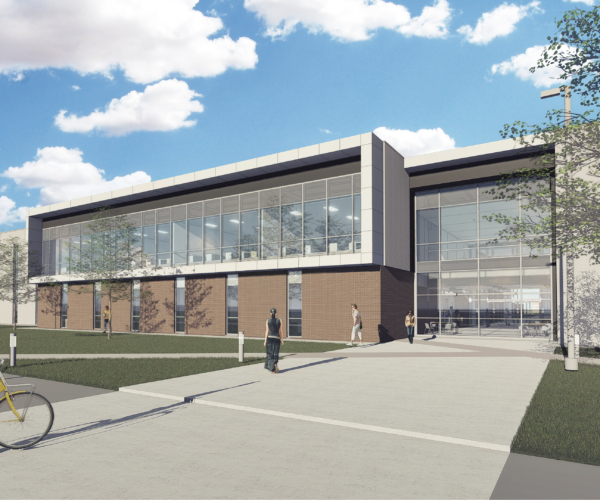
Faced with an increasing shortage of construction jobs, industry-academic partnerships are needed to draw highly skilled workers to close a widening gap in this field.
These partnerships are essential to the construction profession, as they provide new and innovative vocational educational curriculum and facilities designed to expand and improve training for the industry’s future workforce.
This collaboration has great potential to reverse the downward trend in construction workers nationwide. According to the U.S.Bureau of Labor Statistics, unfilled positions in the construction industry are expected to grow to more than 740,000 vacancies by 2026.
An alternative to rising college costs
A renewed focus on vocational construction education comes at a critical juncture, as rising costs to attend traditional four-year colleges and universities restrict student access to these institutions.
This has led to an increasing number of college-bound students opting for more affordable educational alternatives, such as vocational careers in construction at two-year community colleges. Gen Zers tend to approach higher education as a value proposition. They shun fields of study at higher education institutions that aren’t a sound return on their investment.
In contrast, vocational training teaches specific skills that are in high demand in construction and other industries.
Besides affordability, vocational educational institutions have appreciably improved their image. For the most part, they no longer have to contend with an outdated characterization of being training grounds or “shop” classes for low-paying, blue-collar jobs.
Today, these schools are viewed mainly as an opportunity for a rewarding, stable, and challenging career without going deep in debt.
In addition, community colleges partnering with the construction industry are developing practical curriculum to ensure what students learn is readily applicable in the field. Those schools also offer the latest construction technology to give students the know-how to be successful in this increasingly technology-driven business.
For this approach to work, it also requires industry collaboration with public school districts to create programs that identify and engage students who may harbor an interest in construction.
For instance, middle-school students enrolled in a vocational program can get an industry certificate or an associate’s degree by the time they receive their high-school diplomas, giving them a head-start in launching their careers.
It may also help reduce the rate of high school drop-outs, as job opportunities in construction may be the right incentive to keep those students in school.
Vocational education isn’t just for those still in high school or recent graduates. It can provide valuable training for construction employees seeking to brush up on their job skills or offer a new career path for laid-off workers and others who endured economic hardships amid the pandemic.
How innovative building design enhances learning
But the success of the industry-academic alliances is heavily dependent on the learning environment. Many buildings housing voc-ed programs need to adhere to designs that enable new concepts and skills to be taught in the classroom to enhance the overall learning experience.
The stereotypical image of vocational education schools is that they are in nondescript buildings, like a warehouse, situated in an industrial park or another remote part of town. The next-gen voc-ed buildings are being built in more populated and attractive settings.
More from UB: 4 ways to help students succeed in an upended job market
For example, the Construction Sciences Building at the Dallas College Coppell Center represents how some vocational schools are taking a fresh and unique approach to training future construction leaders.
The community college, which has offered vocational construction education for more than two decades, was able to modernize its school and program due to its partnership with the Construction Education Foundation, which is collaborating with the school to develop a course curriculum.
This partnership is the cornerstone of the program’s uniqueness, a potent combination that will produce workers with the academic credentials and industry knowledge required to succeed in the construction profession.
Another key difference between typical vocational education programs and the Dallas College’s program is that the latter integrates didactic elements into the building’s design, or essentially creating a building that teaches.
Scheduled for completion in summer 2021, the 96,000-square-foot training facility in Coppell, Texas, will offer a state-of-the-art learning environment and flexible spaces that can adapt to changing needs of the building construction profession.
The Construction Sciences Building is built on a prominent site located near a busy highway. This location is expected to help reinforce the school’s vision of vocational education and build school pride among its students.
The building will house interactive, high-tech laboratories, classrooms, and other spaces supporting the latest technologies, systems, construction methods, energy efficiency. In addition, the project is seeking a LEED v4 new construction silver rating.
Designed as a teaching tool, the building has exposed ceilings that enable students to easily examine the building’s mechanical systems, plumbing, electrical wiring, and other construction systems and methods taught in the classroom.
The building, which industry partners partially fund, has various construction equipment donated by construction firms that allow students to gain hands-on industry experience.
The building’s design also includes a modular system that allows the school to add more classrooms and workshops as the program grows. The modules are clustered around collaborative spaces, where students congregate and reinforce what they learn in the classrooms and workshops.
Tobias Newham is an Associate Principal at The Beck Group, an integrated design-build firm.








